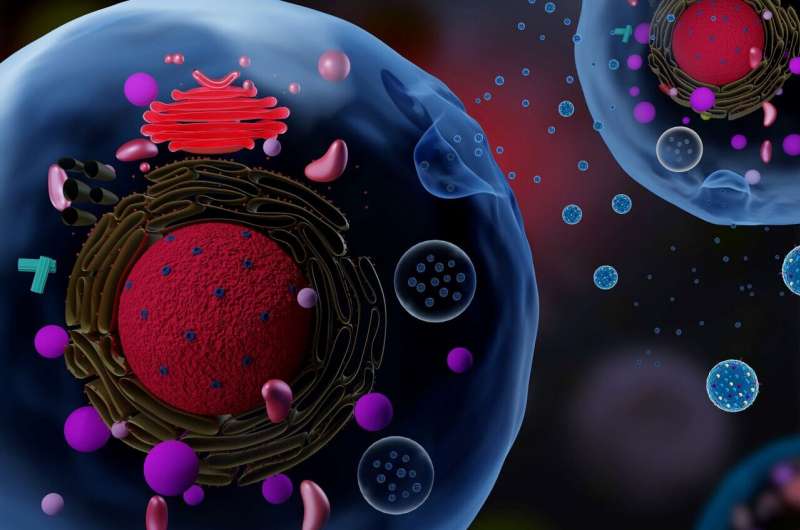
Exosomes are small vesicles
released by cells, which contain proteins and genetic materials. They are
thought to be involved in various life activities, but current techniques to
observe them are expensive and time-consuming. In a recent study, a team of
undergraduate students from DGIST, Korea, proved the convenience and
effectiveness of laser-based technique in identifying exosomes using exosomes
from a less studied cancer type, paving the way for future exosome research.
Despite our great progress in understanding various cellular mechanisms over the last decades, many of them remain unclear. Such is the case for exosomes, small vesicles released by cells that contain genetic materials called "RNA" and various proteins. The roles of exosomes are believed to be very varied and important, both for normal bodily functions and also in the spreading of diseases like cancer. However, exosomes are so small that studying them is challenging and calls for costly and time-consuming techniques, such as electron microscopy (EM).
To tackle this issue, a team of undergraduate students from Daegu Gyeongbuk Institute of Science and Technology (DGIST), Korea, explored a different and promising method for analyzing exosomes. In their study, which was published in PLOS One, they focused on dynamic light scattering (DLS), a laser-based technique that can be used to easily determine statistical parameters about the sizes of a large number of vesicles. What was admirable, as per Prof Jung-Ah Cho (corresponding author of the study), was that "the undergraduate students independently conducted the whole study under DGIST's Undergraduate Group Research Program with no external help."
First, they compared the exosomes of two types of cancer cells: a well-studied breast cancer cell line and a mouse fibrosarcoma cell line. The exosomes secreted by cancer cells of the latter type had rarely been studied before. Thus, to bring more information to the table, the team also used EM and other analytical techniques (such as Western blot) in addition to DLS.
Aside from identifying proteins within the exosomes, the results helped clarify the advantages and disadvantages of EM and DLS. Overall, when used properly, DLS seems to be a reliable and convenient tool for studying exosomes, as Prof Cho explains: "DLS is an efficient technique that is comparatively inexpensive and simple; it can quickly and sensitively measure the size and purity of exosomes without technical difficulties. In contrast, EM is expensive and not suitable for daily or routine measurements."
Having a more accessible technique to study exosomes should help scientists all over the world get involved in exosome research. When asked about the exact implications of using DLS for this purpose, Prof Cho replied, "The many advantages of DLS for analyzing exosome extracts could speed up research on disease diagnosis, prognosis monitoring, and drug delivery systems using exosomes." From a more academic point of view, the results of this study provide some of the basic data needed to understand the biological activities of exosomes derived from fibrosarcoma.
This study represents a significant step towards a better understanding of exosomes and their roles, both in sickness and in health. With any luck, DLS will play its part to solve these mysteries.

 Previous page
Previous page Back to top
Back to top







